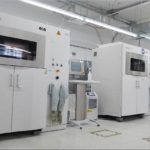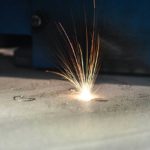Blog / Software
OTTO makes additive manufacturing highly accessible to any business ready to provide outsourced 3D printing to their own customers, offering a comprehensive, automated solution that begins with the uploading process and ends once the product has been delivered. Making it possible for companies of all sizes to add a new stream of revenue without any capital expenditure, OTTO lends a long list of features and advantages to any business–along with promising strict quality control procedures.
Everyone wants to produce a quality product, but a tremendous amount of planning and organization is required behind the scenes once designers do their part in uploading a printable model. OTTO’s job begins there. Once the designer presses the upload button, OTTO takes over to perform the heavy lifting. This includes quality assurance additive manufacturing too.
Making Sure 3D Models Are Printable
Production of quality 3D printed prototypes and parts requires dedicated, continued attention. First though, 3D models must be converted into printable 3D printer files. This begins with suitable materials and technology for each geometry; however, as models undergo analysis for 3D printing–and sometimes file fixers must enter the picture–the most common stumbling blocks are incompatibility with materials and/or technology. Different materials are accompanied by different guidelines and design tolerances, sometimes posing manufacturing challenges with more complex structures.
Other common issues in printability that require addressing before manufacturing can proceed include:
Monitoring 3D Printed Parts Live
While topics including modeling, 3D printing materials and technology, and post-processing are very popular, processes like live monitoring are often overlooked as less exciting elements of production. They are, however, critical to the successful outcome of quality 3D printed products, relying on consistent notifications during production, making it possible to fend off irregularities quickly. While quality assurance means understanding what the customer wants, quality control means ensuring successful delivery of strong products.
Maintaining Required Facility 3D Printing Certification
No matter how much assuring, controlling, or managing is available in terms of quality, certifications are required for manufacturing of some products and they must be maintained in advanced facilities. Examples include:
ISO 9001 Certified
ISO 9001-compliant manufacturing facilities in Long Island City, NY, and Eindhoven, the Netherlands.
IATF 16949 Certified
IATF 16949 certification, meeting the requirements for quality management systems in automotive part manufacturing at our Eindhoven facility.
Expectations for maintenance of 3D printing hardware are rigorous too in the additive manufacturing environment. That means disciplined schedules for preventative maintenance and continued optimization of all factory machines.
Understanding that Customized Products Require Customized Quality
While printability issues may be quickly rectified, other times more extensive changes are necessary. This often goes with the territory due to the level of intense customization possible with 3D printing. File fixers are there to take the error out of the ‘trial and error’ process, offering customized feedback regarding why a model might not be printable to begin with or could fail later during additive manufacturing. Additive manufacturing quality control often entails a genesis resulting in modifications to a 3D model and ultimately, a 3D printed product that is not only deemed successful but higher in quality too.
In the end, every product undergoes the same additive manufacturing quality control process whether it is a highly customized part expected to perform in an aerospace application, a model for an architectural project, or a prototype being redesigned for further testing in product development.
Testing 3D Printed Parts After Manufacturing
Parts must be evaluated for excellence before they are expedited for delivery to the customer. In most cases, a common benchmark is used in 3D printing like a tensile testing bar. Products must be measured, assessed, and signed off for by additive manufacturing quality control personnel.
Some parts may pose varying restrictions or demand unique considerations. Large service parts are a good example in terms of adaptability issues, as varying materials or methods may be necessary to avoid stress factors, warping, or outright failure; however, quality additive manufacturing technology like Selective Laser Sintering (SLS) is so versatile that it can be used to 3D print structures of many different sizes, as well as for use in different applications like aerospace and drones, automotive, robotics, mechanical, medical, and more.
About OTTO
Other features include:
The OTTO manufacturing enterprise software is easily integrated, simplifying production of 3D printed parts in any volume with a wide variety of suitable materials and technologies--meeting the most advanced standards for any manufacturing enterprise.



Share:
We use cookies to offer you a better browsing experience, including personalized advertising. By continuing to use the site you agree to their use.
Learn more